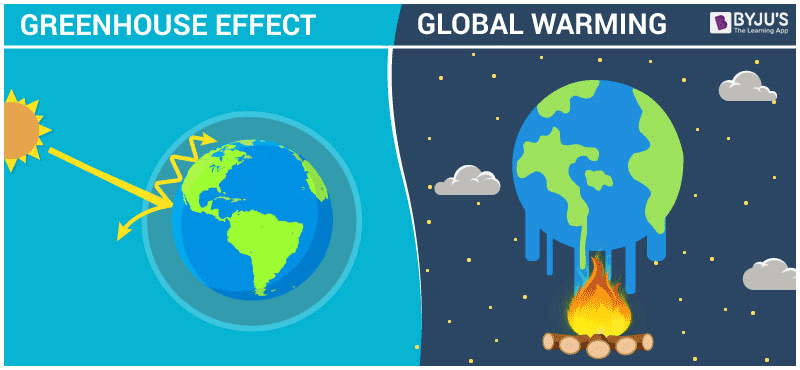In the intricate tapestry of biodiversity and climate dynamics, a most unexpected union emerges: the confluence of greenhouse gardens and the looming specter of global warming. While many may hastily dismiss greenhouse gardens as innocuous sanctuaries for hybrid orchids and exotic vegetables, a deeper exploration reveals their profound implications for both environmental stewardship and climate change mitigation. This dialogue unveils intriguing metaphors, weaving together the essence of horticulture and the urgent narrative of rising temperatures.
Greenhouses, akin to transparent fortresses, shelter delicate flora from the caprice of the external climate. These elegant structures utilize glass or plastic to capture solar energy, creating a microclimate that is both nurturing and controlled. However, the irony is palpable: while they allow us to cultivate lush, verdant environments, they also serve as potent symbols of humanity’s relationship with nature — a relationship fraught with tension and contradiction. Just as a greenhouse nurtures, it also symbolizes the challenges of excess. The very mechanism that allows us to grow crops out of season is emblematic of the greenhouse effect we so diligently seek to mitigate.
The greenhouse effect, much like a double-edged sword, is a natural phenomenon that warms Earth’s surface. Solar energy enters our atmosphere, and some of that energy is trapped by greenhouse gases. This process is vital; without it, our planet would be inhospitable, a barren wasteland. However, human activities, principally the burning of fossil fuels and deforestation, have exacerbated this natural occurrence, leading to an alarming rise in global temperatures. Thus, modern society finds itself at a crucible: can the humble greenhouse garden offer solace and strategies in the face of escalating climate crisis?
Interestingly, greenhouse gardens stand as a testament to resilience and ingenuity. Utilizing advanced techniques such as hydroponics and aquaponics, these cultivated environments maximize space and resource efficiency. They burgeon with possibilities; in urban settings, they transform rooftops and vacant lots into lush ecosystems, providing not only fresh produce but also significant carbon offsets. In this context, one might liken greenhouse gardens to modern-day bastions of sustainability, reminding us that solutions often blossom from the most unassuming seeds of innovation.
Moreover, greenhouse gardening can augment local food systems, reducing the dependence on long, carbon-intensive supply chains that transport food across continents. Homegrown fruits and vegetables not only taste better but also alleviate the burden on transportation infrastructure, which contributes substantially to carbon emissions. There exists a poignant irony here: while greenhouses harness the sun’s warmth to grow our food, they simultaneously challenge the conventional agricultural paradigms that harm our planet.
This dual role of greenhouses can be portrayed through the metaphor of a bridge — a connection between the present and a sustainable future. As we funnel resources into greenhouse technology, we are constructing a pathway toward resilience. This bridge can lead our communities to food security and reduce our carbon footprint. The more we build and nurture these microcosms of agriculture, the closer we traverse toward mitigating the effects of global warming.
Nonetheless, challenges abound. The energy needed to maintain optimal temperatures within greenhouses can lead to increased fossil fuel consumption if not managed judiciously. However, innovative architectural designs and renewable energy applications, such as solar panels, are being integrated to mitigate this. These initiatives signal a shift — a reconciliation between the necessity for controlled agricultural environments and the imperative to curb greenhouse gas emissions. The question then arises: can greenhouse gardens be designed not just as food producers but as net-zero energy conduits?
In addressing this question, we must look towards symbiotic relationships within these gardens. The implementation of permaculture principles fosters biodiversity, which can enhance the resilience of these ecosystems. By attracting beneficial insects and incorporating companion planting techniques, greenhouse gardens can flourish without relying heavily on chemical pesticides or fertilizers, thereby lessening their environmental impact.
Furthermore, indoor gardens serve as laboratories for innovation, where sustainable practices can be developed and tested. By experimenting with various cultivation techniques, gardeners can explore which methods yield the highest productivity while remaining eco-friendly. This underground experimentation echoes the age-old tradition of alchemy, where humble beginnings lead to profound transformation. In this case, the philosopher’s stone is our ability to cultivate within the confines of environmental responsibility.
Engaging with greenhouse gardens transcends mere agriculture; it fosters community awareness and participation in the discourse surrounding climate change. Educational programs designed within these greenhouses can empower individuals, teaching the significance of sustainable practices. They become hubs of knowledge, where people gather not just to grow plants but to cultivate ideas — a fertile ground for the seeds of social change.
In conclusion, the relationship between greenhouse gardens and global warming presents a rich, multidimensional narrative. The delicate balance between nurturing life and confronting climate change is intricate, layered with potential and caution. Just as a garden flourishes with attentive care, the journey toward environmental sustainability requires diligence and innovation. In these cultivated spaces, we find a hopeful convergence of nature and technology, underscoring the possibility that from the very structures we create to sustain our appetites, lies an opportunity to forge a sustainable future. It is within this surprising connection that we can herald a new era, where lush gardens not only comfortably coexist with our planet but work tirelessly to rejuvenate it.








